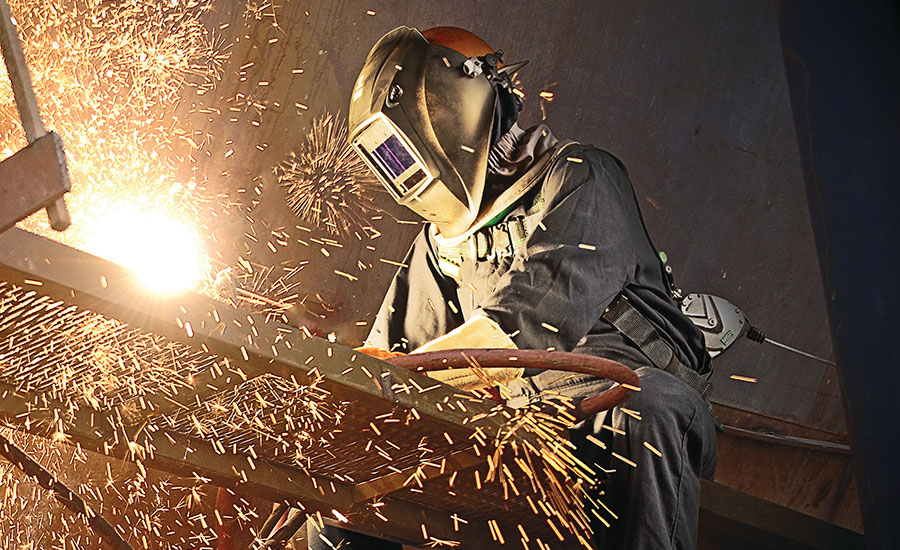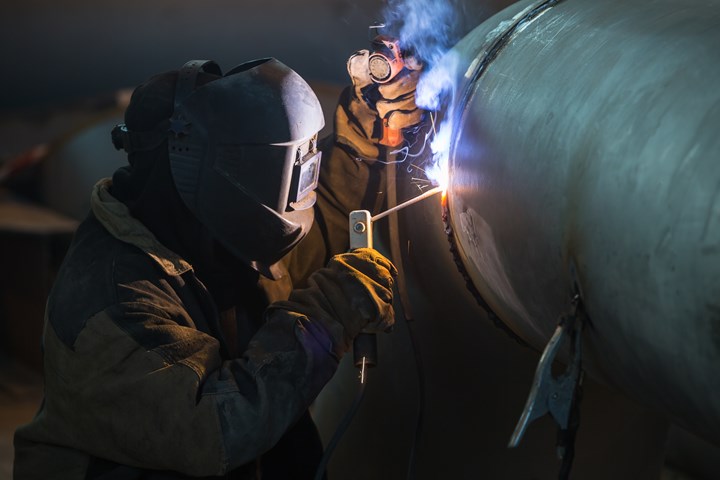How to Create an Efficient Welding WPS: Tips and Best Practices
How to Create an Efficient Welding WPS: Tips and Best Practices
Blog Article
The Ultimate Guide to Welding WPS Procedures: A Thorough Review for Welders
In the detailed globe of welding, Welding Treatment Requirements (WPS) work as the foundation of making sure quality, consistency, and security in welding procedures. Recognizing the nuances of developing, executing, and monitoring WPS procedures is essential for welders looking to raise their craft and satisfy sector requirements. As we look into the different elements of a WPS and explore the intricacies of qualification and accreditation, we will reveal the vital role these procedures play in the world of welding. Let's embark on a trip to unravel the intricacies and relevance of WPS treatments in welding techniques.
Value of WPS Procedures
Understanding the significance of Welding Treatment Requirements (WPS) treatments is important for making certain the quality and honesty of bonded structures. WPS treatments act as a roadmap for welders, detailing the essential steps, parameters, and materials required to accomplish a sound weld. By adhering to WPS standards, welders can make certain uniformity in their job, resulting in structurally audio and dependable welds.
Among the primary reasons that WPS procedures are essential is their function in maintaining weld quality and honesty. Following the specified welding criteria and methods outlined in the WPS assists avoid defects such as porosity, breaking, or insufficient combination, which can endanger the strength and longevity of the weld. Furthermore, WPS treatments are critical for making certain compliance with sector requirements and codes. By adhering to recognized WPS standards, welders can demonstrate that their job satisfies the essential demands for safety and quality, offering assurance to customers, assessors, and regulatory bodies. Fundamentally, the significance of WPS treatments can not be overstated, as they are essential to achieving constant, high-grade welds that meet industry criteria and specifications.

Parts of a WPS
A Welding Treatment Specification (WPS) commonly makes up vital parts that information the details needs for implementing a weld, making certain uniformity and top quality in the welding procedure. The key parts of a WPS include crucial variables such as base metals, filler metals, preheat and interpass temperature levels, welding procedures, protecting gases, welding placements, and post-weld warm therapy requirements.
Base metals refer to the products being joined, while filler metals are made use of to fill the gap in between the base metals during welding. The welding procedure details the particular technique to be utilized, whether it's gas metal arc welding (GMAW), secured metal arc welding (SMAW), or one more technique. Welding placements specify the positionings in which welding can be executed.

Certification and Certification
Having developed the essential elements of a Welding Treatment Specification (WPS), the focus now shifts in the direction of the essential elements of credentials and certification in welding methods.

Qualification, on the other hand, is the formal acknowledgment of a welder's qualifications by a relevant qualification body or company. Welding qualifications are usually based upon the details welding procedures, products, and settings a welder is certified to work with. Holding a valid welding accreditation shows that a welder satisfies sector criteria and is experienced to perform welding jobs to the needed specs.
Producing a WPS
To establish a Welding Treatment Spec (WPS) that fulfills market criteria, careful factor to consider of welding procedures, products, and operational criteria is necessary (welding WPS). The primary step in creating a WPS is to identify the welding process to be utilized, such as gas steel arc welding (GMAW) or protected steel arc welding (SMAW) As soon as the welding process is established, the next essential element is picking the suitable products, thinking about aspects like base steel type, density, and joint design. Operational specifications such as welding existing, voltage, travel speed, and protecting gas composition need to also be carefully defined in the WPS.

Implementing and Keeping Track Of WPS
Upon finalizing the extensive Welding Procedure Specification (WPS) that thoroughly details welding processes, materials, functional specifications, and quality control steps, the emphasis changes to properly implementing and keeping track of the well-known procedures. Execution includes making certain that all welders associated with the task are familiar with the WPS and follow it diligently throughout the welding procedure. This calls for providing appropriate training and supervision to ensure adherence to the specified procedures. Keeping an eye on the WPS includes constant oversight to confirm that welding tasks straighten with the documented specs. Examinations, testing, and top quality control steps are important components of the tracking process to identify any kind of problems or discrepancies immediately. Normal audits and testimonials of the welding treatments aid in keeping consistency and top quality throughout the project. Efficient application and surveillance of the WPS are crucial for making certain the stability, stamina, and safety of the bonded joints, eventually adding to the general success of the welding project.
Verdict
Finally, understanding and following Welding Procedure Specifications (WPS) is crucial for welders to make sure top quality, consistency, and security in their job. By understanding the components of a WPS, obtaining appropriate credentials and certifications, producing comprehensive procedures, and applying and checking them properly, welders can boost their abilities and proficiency in welding techniques. Sticking to WPS procedures is essential for producing top quality welds and meeting market standards.
In the intricate globe of welding, Welding Procedure Specifications (WPS) offer as the backbone of ensuring high quality, consistency, and safety and security in welding procedures. The welding process outlines the specific method to be utilized, whether it's gas steel arc welding (GMAW), secured steel arc welding (SMAW), or one more method.To establish a Welding Procedure Specification (WPS) that meets sector requirements, careful click here for more consideration of welding procedures, materials, and functional parameters is important. The initial action in creating a WPS is to determine the welding procedure to be used, such as gas metal arc welding (GMAW) or secured metal arc welding (SMAW)Upon settling the extensive Welding Procedure Requirements (WPS) that thoroughly details welding processes, products, functional criteria, and quality guarantee measures, the focus changes to properly executing and keeping an eye on the established treatments.
Report this page